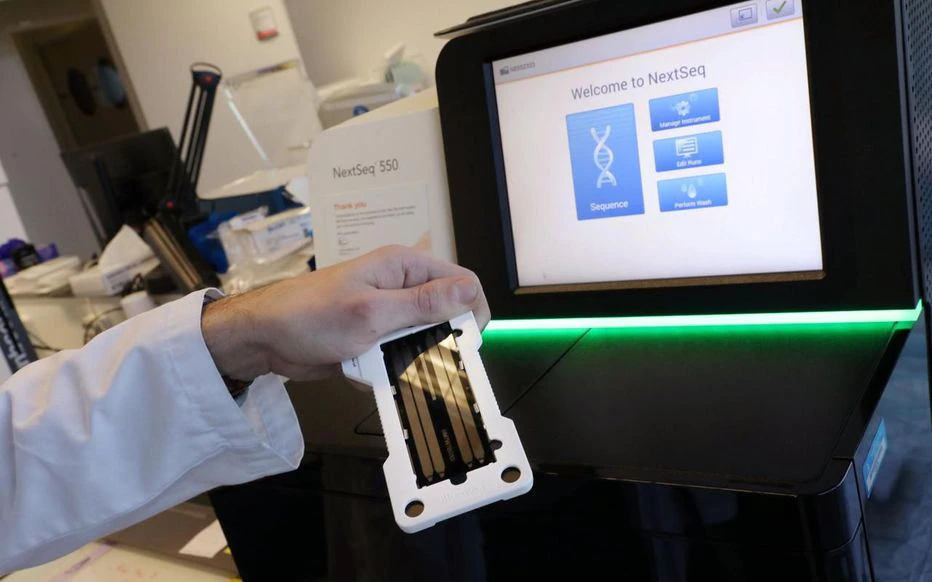An “increase” in the number of recorded episodes and a “situation monitored with attention”.
The so-called “Indian” variant of SARS-CoV-2 (B.167), identified for the first time in France in early April, is now linked to 24 clusters in the country, indicates Public Health France in its epidemiological update published Thursday evening.
The majority of these (18 out of 24) are due to the same sub-lineage that is spreading heavily in the UK, B.167.2.
The new aspect is that two of these 24 outbreaks have no known connection with India.
We take stock.
A progression in recent weeks
24 “episodes” of at least one positive case have therefore been identified (between four and eight now appear each week), without knowing the exact number of people infected in total.
Eight regions are affected at this stage, seven in mainland France and Guyana.
For 20 of these 24 households, one or more people had returned from India.
Two others are linked to a transmission on a ship whose crew were of Indian nationality.
For the last two, “no direct link with India has been reported”.
The Indian variant has been confirmed most often by sequencing, the technique of analyzing the complete genetics of a virus.
Screening, a complementary method, faster but less precise, does not make it possible to identify this “Indian” variant.
Contaminations in France?
The two clusters with no known link with India are family.
The first, identified in Auvergne-Rhône-Alpes, groups together 5 positive cases, including 3 cases confirmed in B.167.2.
If its origin is still the subject of investigations, it "could be linked to contamination in Switzerland", indicate the health authorities.
The second, in Île-de-France, involves three positive cases, at least one of which is from the same sub-lineage.
Contamination this time may have occurred in the workplace, where other positive cases (to a variant not identified at this stage) have been reported.
Read also Covid-19: how the ARS of Ile-de-France is preparing for the Indian variant
This "suggests that transmission chains of the B.1.617 lineage have occurred, locally, around cases imported from India", indicates Public Health France. In other words, that contact-tracing and isolation measures in France have not made it possible to prevent an infected person returning from India from infecting another.
“It is
normal
that there are secondary contaminations after imports;
the question is whether these secondary contaminations are more frequent with B.1.617.2 than they are with other versions of the virus.
It is difficult to distinguish an increase in the cases identified in a country which would be simply due to an increase in imports, from the effect of a higher local transmissibility ”, explains a scientist who follows the file very little.
A variant classified as worrying
If these episodes are monitored very closely, it is because of the characteristics of this “Indian” variant, now classified among those of “concern” (VOC) by the World Health Organization and by Public Health France.
One of its mutations, L452R, would be notably "associated with a risk of increased transmissibility of the virus, and with a possible immune escape", indicate the French health authorities.
As for the P681R mutation, it could make vaccination with Pfizer “slightly” less effective.
But all these data are only preliminary, and there is nothing to confirm them.
Read also Indian variant classified as "worrying": 5 minutes to understand the WHO announcement
The situation in neighboring UK is also drawing a lot of attention.
The B1.617.2 subline, classified VOC by Public Health England as of May 8, has increased sharply in recent weeks, particularly in London and the north-west of the country.
1,313 cases were identified as of May 12, or 793 more in a week.
Useful @guardian article on B.167.2 (1st detected in Indian) - in a few areas this is more dominant
The variant is also growing faster than compared to B117 (Kent) https://t.co/OYgdra41ZH
Detailed @PHE_uk Reporthttps: //t.co/Tlx9UajaRq pic.twitter.com/MwHJ2QOevo
- Kamlesh Khunti (@kamleshkhunti) May 14, 2021
Numerous cases of “indigenous” contamination unrelated to India have now been identified across the Channel.
Scientists estimate that this variant is at least as transmissible as the so-called “British” one, itself already between 40 and 90% more contagious than the “classic” strain.
The United Kingdom is preparing to enter this Monday into a new stage in its deconfinement plan, which is already well advanced.
"Worried" by the situation, Prime Minister Boris Johnson however indicated Thursday that containment measures at the local level could be decided.
In Bolton, a badly affected city in the north of the country, door-to-door screening operations have already been launched in order to break the chains of transmission as quickly as possible.





/cloudfront-eu-central-1.images.arcpublishing.com/prisa/VMXSEROZRFLUO5THK6ZMQ2QGPA.jpg)



/cloudfront-eu-central-1.images.arcpublishing.com/prisa/QYARZLICO47BA5G6YE4UUN26IQ.jpg)